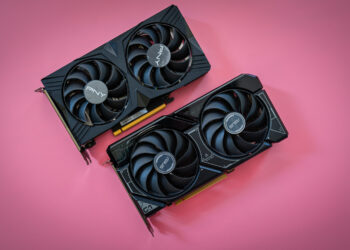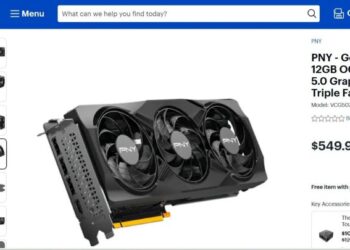As Nvidia aims to strengthen the presence of its GeForce RTX 5090 graphics card in the market, the company and its retail partners are encountering some functionality challenges affecting the GPU’s performance.
Multiple users who have purchased the RTX 5090 GPU from various retailers have reported a specific issue: the GPU is equipped with fewer ROPs (Raster Operations Pipeline units) than expected, hindering its ability to effectively render images during 3D post-processing.
A user on the TechPowerUp forums mentioned that their Zotac-branded GeForce RTX 5090 GPU was showing a lower number of ROPs than anticipated. Despite their attempts to resolve the issue through software reinstalls and switching the video BIOS, these efforts proved unsuccessful.
Upon further investigation of a Zotac RTX 5090 GPU, TechPowerUp discovered that the component was reported to have 168 ROPs instead of the standard 176. This discrepancy equates to a potential 4.5% decline in GPU performance; however, benchmark tests indicated performance drops exceeding 5% in some cases.
Reports suggest that the issue is not confined to Zotac GPUs but also affects models from ASUS, Gigabyte, MSI, Palit, and NVIDIA, indicating a hardware-related problem rather than a software one.
Nvidia has acknowledged the performance concerns with the RTX 5090 GPU, confirming that only a limited quantity of graphics cards have been impacted. The company also noted that the GeForce RTX 5090D, which is specific to the Chinese market, along with the GeForce RTX 5070 Ti, are similarly affected.
We have identified a rare issue affecting less than 0.5% of GeForce RTX 5090 / 5090D and 5070 Ti GPUs, which exhibit one fewer ROP than specified. The average graphical performance impact is around 4% and does not affect AI or Compute workloads. Affected customers should contact their board manufacturer for a replacement. The production issue has been resolved.
– Nvidia
YouTuber JayzTwoCents suggested that those worried about their RTX 5090’s performance should consider using TechPowerUp’s GPU Information Utility, which can be found here or by searching for GPU-Z. The utility will provide crucial details about your GPU, including the ROPs section, which should display 176 for a properly functioning card. Any reading below that, such as 168 ROPs, may indicate a problem.
For initial troubleshooting, the YouTuber advises against returning the defective GPU right away, as it could lead to prolonged replacement times and may just be resold to another consumer.
He recommends contacting the customer service department of the retailer where the card was purchased and to reach out with a message stating ‘Missing ROPs, response required.’ It’s important to stay considerate in the communication, given that many others may be experiencing similar issues.






